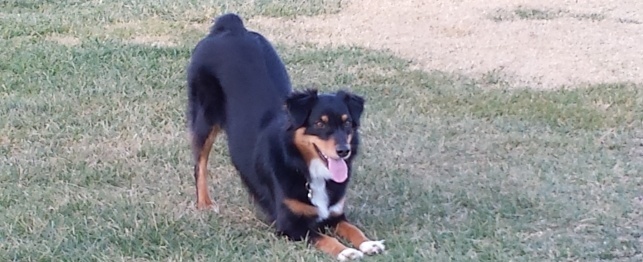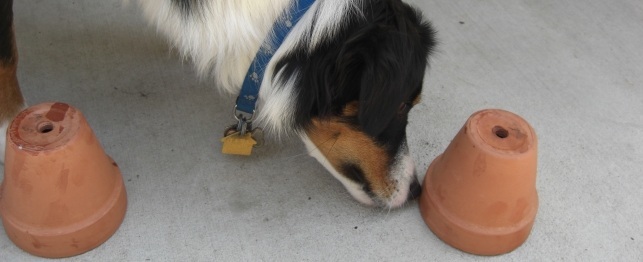This was a post I placed on the RSPCA SA site. It was in response to and article written by a lady that stated she had 2 dogs, and her second dog was trainind with positive einforcement training, and she was so happy with the results.
[Name withheld] - I am so happy for you that positive reinforcement training worked for you. And yes I am sure there are many success stories such as yours. I would like to point out though that ALL correct dog training incorporates positive reinforcement. If you used a dog trainer previously that mainly focused on negatives in training, then I can understand why you had better results with your second dog. If you do use positive reinforcement training, but incorporate corrections for unwanted behaviour. The positives should ALWAYS out-number the negatives by at least 10 to 1. Also when using this type of training, all positives should be heartfelt and done with emotion, so the dog actually gets a sense of doing right. Negatives should be carried out with no emotion, but calm positive energy. Correcting a dog does not mean using the emotion of anger or frustration. During the correction even if just a harsh tone of the voice and maybe a loud hard clap of your hands, when your dogs stops the unwanted behaviour, reward immediately with praise using voice tone. Dogs feel a lot more secure and happy when they can predict the consequences of their actions with 100% accuracy. In the dogs world there is never any grey areas, it should be totally black or white.. you either can or you can't.. there should never be sometimes. That's where most people fall down with their training - Lack of consistency creating confusion in the dog.
I am not sure that time out actually works in correcting unwanted behaviour in a lot of cases, but yes agree if used correctly may help with some behaviour problems.. Firstly a dogs focus is totally in the present. Most professional dog trainers and behaviourists agree that there is about a 1.5 second window for either rewarding a dog for correct behaviour, or correcting for unwanted behaviour. The problem I have with this form of 'punishment', is that the time delay between the act and the consequence could be delayed to much for the dog to associate banishment or being ostracised from its pack for the behaviour it was actually carrying out. Sure many dogs that have bonded strongly with their pack do not like being pushed away from the pack it belongs too, and usually after a period of banishment come back into the pack more subdued. But I am not totally convinced that the dog actually associates this form of punishment with its actions. If for example your dog is doing something wrong, so you go over to your dog and take him to time out.. How do we know the dog is not associating banishment with being picked up (or being led out) and taken to another room for time out.
I went to a clients house that had a problem with her dog continually running away from her, nearly every time she went towards the dog. Sometimes the dog was ok..other times it would just run away. The dog began to read the owners body language, and even if the owner wasn't going to do time out, but was a little tense the dog would back away fearing time out. So the dog started associating tense body language with being ostracised and then run away. Now this made the owner angry, so when she caught the dog instead of praising it she would banish the dog for running away. What was happening then, the dog was trying to make it harder for the owner to catch it.. so what happened, the owner got more angry. If she couldn't catch the dog she gave up. Dog wins for avoiding her. This became a vicious cycle. My answer to her was to stop time out, as for one thing I wasn't totally convinced it actually worked the way some think. My philosophy with my clients if trying to correct a dog for unwanted behaviour and you miss the 1.5 second window, don't correct your dog it's too late.
Its amazing how many people I see go mad at their dog, the dog runs off, the owner chases, the dog enjoys this chase, plus also gets a sense of controlling the situation. Then owner finally catches the dog and goes mad at it.. What are we telling the dog? It's fun to chase and you are in control, but not so much fun to get caught and you loose control. Next time the dog will try harder to not get caught, or if it has a strong fight instinct will eventually turn and growl to assert dominance or to keep control, because it doesn't want to loose control by being caught..... Now hasn't the owner just created more behavioural problems? So please be careful how and when you administer punishment, even if its just with time out...
By Mark Singer
Adelaide CanineTraining

 Playing Charades with Your Dog
Playing Charades with Your Dog
Playing Charades with Your Dog
Playing Charades with Your Dog
 Games for Dogs: Bobbing for Biscuits
Games for Dogs: Bobbing for Biscuits
Games for Dogs: Bobbing for Biscuits
Games for Dogs: Bobbing for Biscuits
 How to Balance Your Pets Play and Relaxation
How to Balance Your Pets Play and Relaxation
How to Balance Your Pets Play and Relaxation
How to Balance Your Pets Play and Relaxation
 Dog Games - Try Puppy Push-Ups
Dog Games - Try Puppy Push-Ups
Dog Games - Try Puppy Push-Ups
Dog Games - Try Puppy Push-Ups
 Flower Pot Scenting Game for Dogs
Flower Pot Scenting Game for Dogs
Flower Pot Scenting Game for Dogs
Flower Pot Scenting Game for Dogs